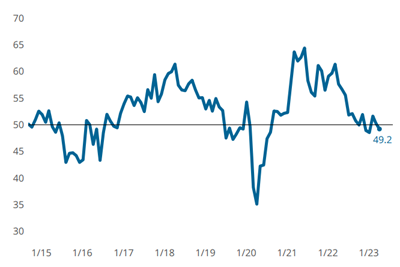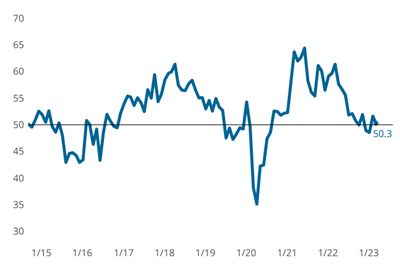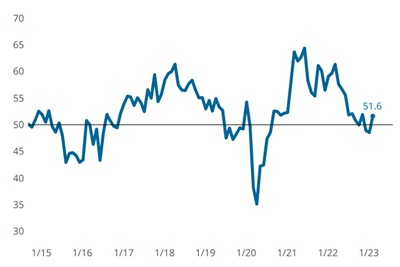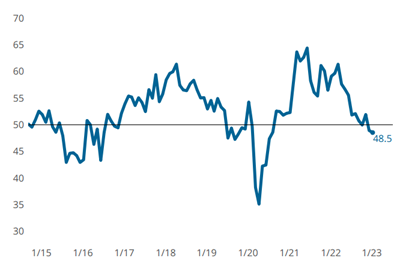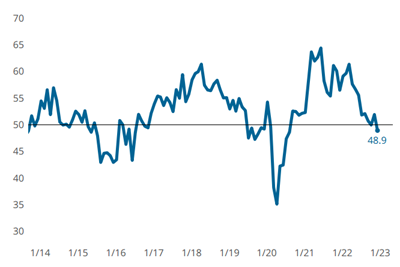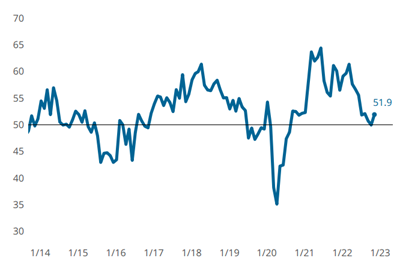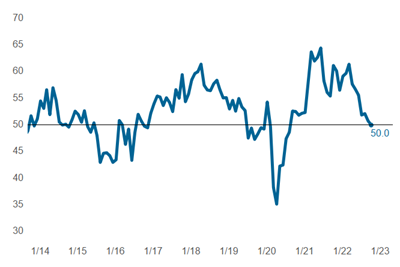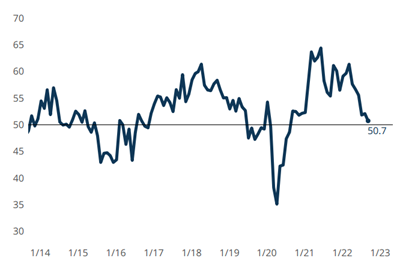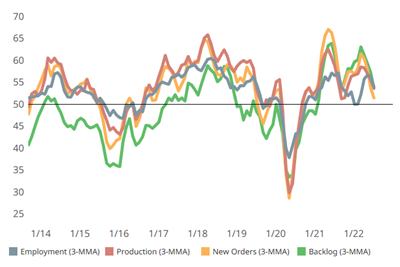Economics
GBI: Composites Fabricating contracted in April
The Gardner Business Index closed April down 1.1 points, continuing its journey from expansion in February, to flat in March and ultimately contracting in April.
Read MoreComposites industry index was flat for March
The GBI: Composites Fabricating closed March flat, losing 1.3 of the 3.1 points gained in February.
Read MoreComposites industry index ends February in growth mode
The GBI: Composites Fabricating closed February at the same level it was in November 2022, right before experiencing a rare two months of contraction.
Read MoreComposites Index shows little change in January
The GBI: Composites Fabricating closed January at around the same contractionary reading in December, with a majority of components following suit.
Read MoreDemand components lead to composites GBI contraction
For the first time in two years, the Composites Fabricating Index has contracted, though components continue to shift between expanding and contracting activity.
Read MoreComposites Index rebounds in November
The GBI: Composites Fabricating closed November up nearly two points, registering expanding activity versus October’s close call with contraction.
Read MoreComposites GBI is headed toward contraction
The GBI: Composites Fabricating in October continued its deceleration trend, though it fared better than most of the manufacturing industry.
Read MoreGBI: Composites Fabricating approaches contraction in September
The GBI: Composites Fabricating closed September on the verge of “flat,” a reading the Index has not seen in two years.
Read MoreComposites industry GBI holds its own in August
The GBI: Composites Fabricating ended August with slowed expansion but managed to stay above water, with all component indices continuing to show slowed rates of growth.
Read MoreComposites industry perpetuates deceleration trend into July
The Composites Fabricating Index continues to experience slowed growth in a majority of its components, inching closer to a reading of “50.”
Read More
